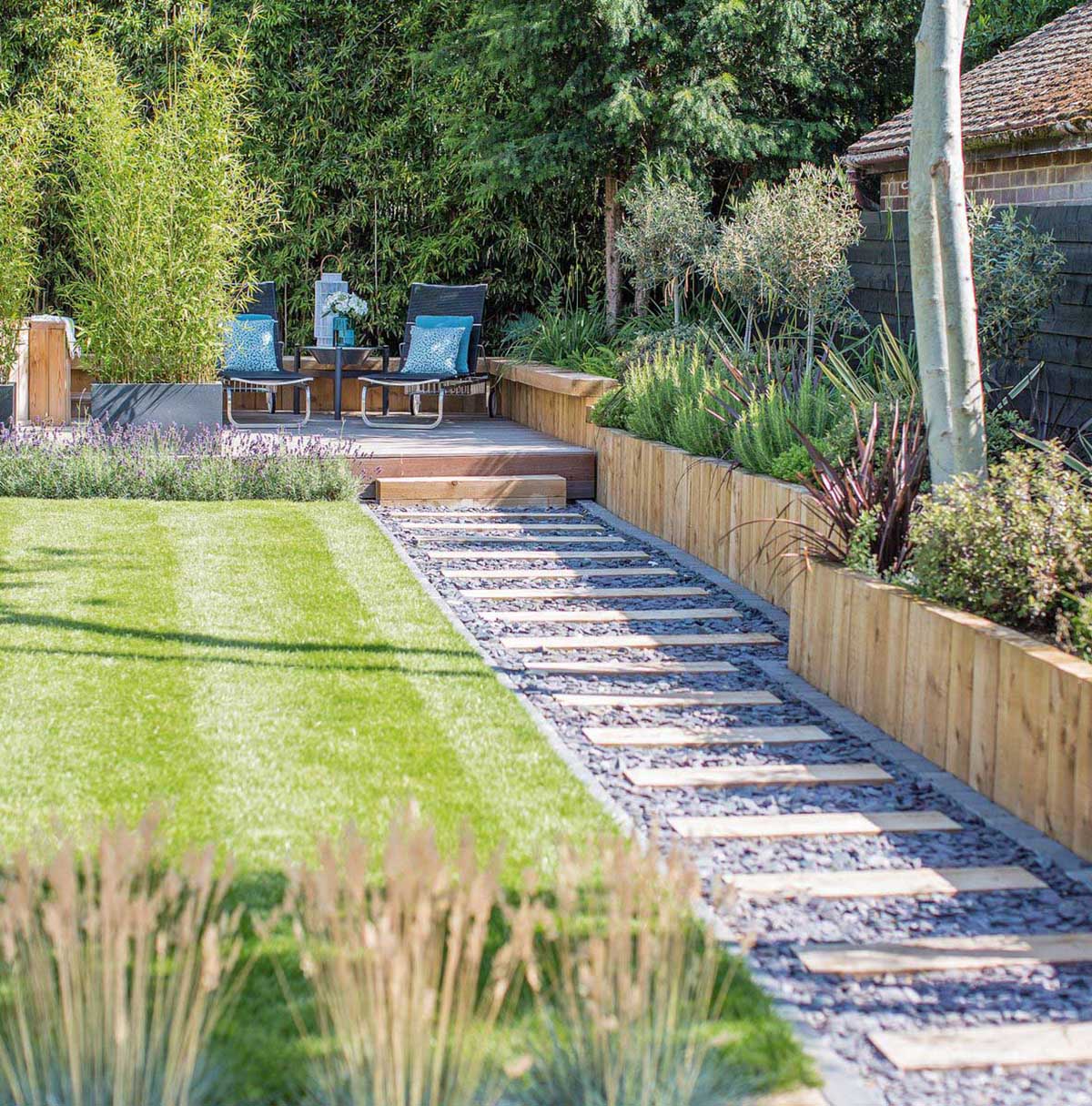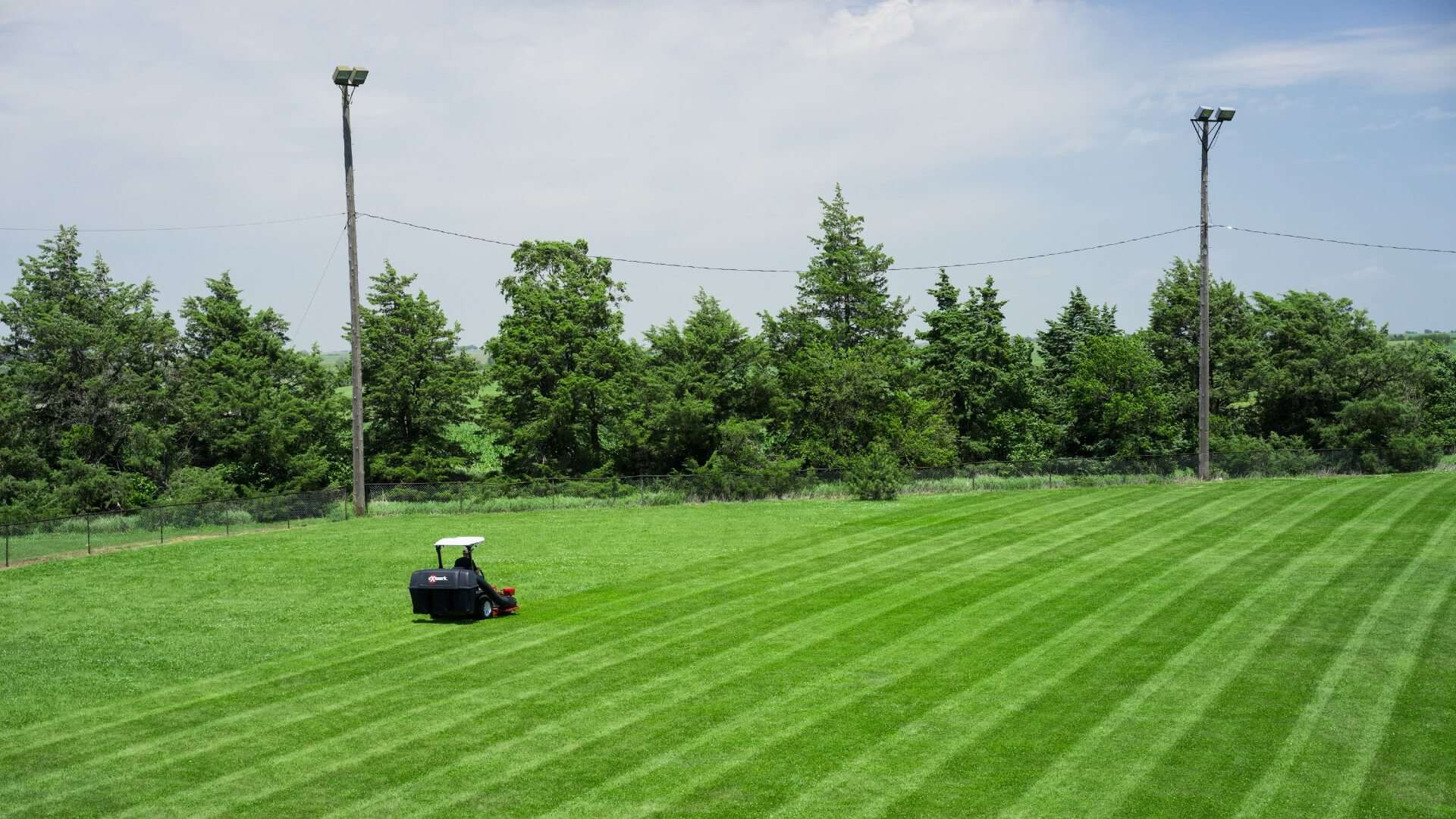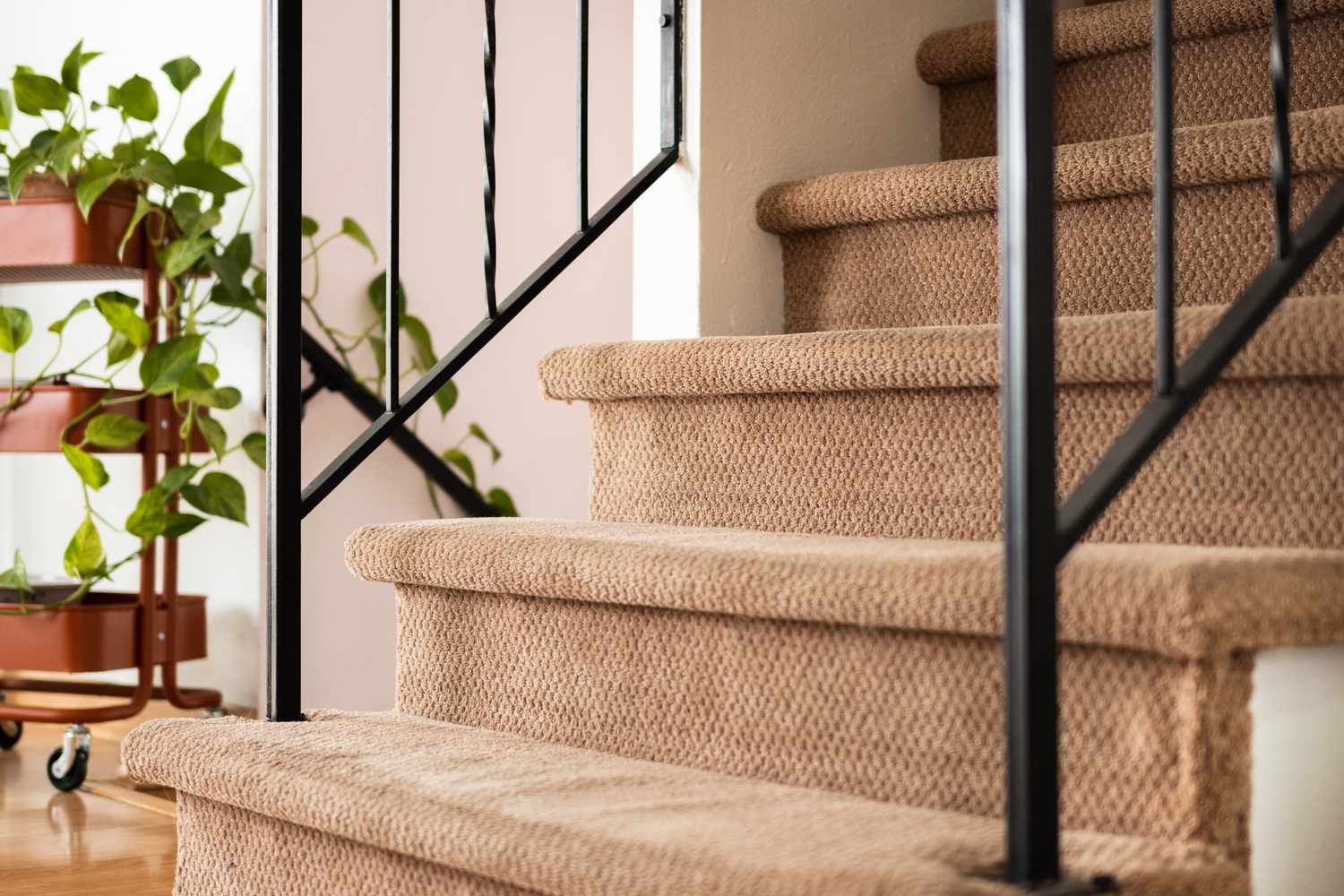Home>Garden Essentials>Landscape Design When Cable Lines Are Buried In The Way


Garden Essentials
Landscape Design When Cable Lines Are Buried In The Way
Modified: March 7, 2024
Get expert tips for landscape design when cable lines are buried in the way. Discover creative solutions to incorporate your garden without compromising safety or utility.
(Many of the links in this article redirect to a specific reviewed product. Your purchase of these products through affiliate links helps to generate commission for Storables.com, at no extra cost. Learn more)
Introduction
Designing a beautiful and functional landscape requires careful consideration of various factors, such as soil conditions, climate, and available space. However, sometimes a significant challenge arises when there are buried cable lines running through the area. These underground utility lines are essential for providing electricity, internet, and other services to our homes and businesses, but they can pose obstacles for landscape design.
In this article, we will explore the challenges that arise when designing with buried cable lines and provide insights into how to overcome them. By understanding the importance of these utility lines and implementing certain best practices, you can create an aesthetically pleasing landscape without compromising the functionality and safety of the cable infrastructure.
Designing around buried cable lines requires careful planning and collaboration with utility companies to ensure that no damage occurs during the process. It is important to consider not only the location and depth of the cable lines but also the types of plants and structures that can be safely installed near them. By following industry guidelines and regulations, you can create a landscape that seamlessly integrates with the existing infrastructure while maintaining its beauty and functionality.
Throughout this article, we will discuss various factors to consider when planning landscape design around buried cable lines. We will explore how to identify the location and depth of the cables, best practices for designing around them, selecting appropriate plants and trees, creating access points for maintenance, and adhering to safety regulations. Let’s dive in and discover how to navigate these challenges effectively.
Key Takeaways:
- Designing a landscape around buried cable lines requires careful planning to avoid damaging the infrastructure. It’s important to identify cable locations, choose suitable plants, and create access points for maintenance.
- Safety is crucial when working near buried cable lines. Always follow regulations, obtain permits, and use proper equipment to protect both the infrastructure and the workers involved.
Read more: How To Bury Electrical Wire To Shed
Understanding the Challenges of Designing with Buried Cable Lines
When it comes to designing a landscape, buried cable lines can present a unique set of challenges. These underground utility lines are crucial for providing essential services to our homes and businesses, such as electricity and internet connectivity. However, designing around them requires careful planning and consideration of safety regulations.
One of the main challenges of designing with buried cable lines is the risk of damaging the infrastructure. Digging or planting near these lines without proper knowledge can lead to costly repairs and service disruptions. It is important to identify the location and depth of the cable lines before commencing any landscaping activities to avoid any accidents or damage.
Another challenge is the limited space available for landscaping near the cable lines. Depending on the location and depth of the cables, there may be restrictions on what can be planted or built in close proximity. This limitation can impact the overall aesthetics and functionality of the landscape design.
Furthermore, different types of cable lines may have specific requirements for clearance or distance from surrounding structures and plants. For example, high-voltage electrical cables may require a larger buffer zone to ensure safety. Understanding these requirements is essential to avoid any potential hazards and comply with regulations.
In addition to the technical challenges, designing around buried cable lines also requires considering the maintenance and accessibility needs. Cable lines may need periodic inspections or repairs, and creating access points or pathways for technicians is crucial to ensure their safety and efficiency.
Overcoming these challenges requires a thorough understanding of the cable infrastructure and collaboration with utility companies. By working together, landscape designers can find innovative solutions that balance the aesthetic appeal of the landscape with the operational needs of the cable lines.
In the next sections, we will delve deeper into the factors to consider when planning landscape design around buried cable lines. We will discuss how to identify the location and depth of the cables, best practices for designing around them, selecting appropriate plants, creating access points for maintenance, and adhering to safety regulations. By following these guidelines, you can create a landscape that harmoniously integrates with the underground cable infrastructure while showcasing your unique design style.
Factors to Consider When Planning Landscape Design
Designing a landscape that incorporates buried cable lines requires careful consideration of various factors to ensure the safety and functionality of the infrastructure. By taking these factors into account, you can create a beautiful and practical landscape that complements the existing utility lines. Let’s explore some key factors to consider when planning landscape design around buried cable lines.
1. Location and Depth of Cable Lines
The first and most crucial step is to accurately identify the location and depth of the buried cable lines. This information can usually be obtained from utility companies or by hiring professional locators. Knowing the precise location and depth helps in determining the areas where landscaping activities can take place without interfering with the cables.
2. Clearance and Safety Requirements
Different types of cable lines have specific clearance requirements to ensure safety. High-voltage electrical cables, for example, may require a more substantial buffer zone than low-voltage cables. It is essential to understand and adhere to these requirements to prevent accidents or damage to the infrastructure. Consult with utility companies or relevant authorities to get accurate information.
3. Compatible Plants and Structures
Not all plants and structures are suitable for planting near buried cable lines. Some plant species have extensive root systems that could potentially damage the cables. It is crucial to select plants that have shallow root systems and are not aggressive in their growth. Additionally, structures such as fences, pergolas, or patios should be designed and positioned with consideration for the cable lines to avoid any interference or obstruction.
4. Access Points and Pathways
Allowing access for maintenance or repairs is an essential aspect of designing around buried cable lines. Creating designated access points and pathways for technicians ensures that they can safely reach the cables without causing disruption to the surrounding landscape. These access points can be disguised with landscaping elements to maintain the aesthetics of the design.
5. Future Expansion and Maintenance
Consider any future expansion or maintenance needs of the cable lines when planning your landscape design. Leave sufficient space and provision for any potential changes or additions to the infrastructure. It is important to think long-term and design with flexibility in mind, allowing for easy access and maintenance of the cables in the future.
By considering these factors during the planning stage, you can create a landscape design that seamlessly integrates with the buried cable lines. Remember to consult with utility companies, follow safety regulations, and seek professional guidance to ensure the best results.
Identifying the Location and Depth of Buried Cable Lines
Before embarking on any landscaping project, it is crucial to accurately identify the location and depth of buried cable lines. This information is vital to ensure that your design plans do not interfere with or damage the underground infrastructure. Here are some key steps to help you identify the location and depth of buried cable lines.
Read also: 9 Best Direct Bury Electrical Wire for 2024
1. Contact Utility Companies
The first step is to reach out to the utility companies that are responsible for the cable lines in your area. They will have precise records of the location and depth of the cables. Contact the appropriate utility companies and provide them with the details of your project. They will be able to guide you on the necessary steps to identify the cable lines and ensure their protection during the landscaping process.
2. Schedule a Utility Locator Service
Many utility companies offer a locator service or can recommend qualified professionals who specialize in identifying buried utility lines. These professionals utilize advanced equipment, such as ground-penetrating radar and electromagnetic locators, to accurately detect the location and depth of the cables. By hiring a utility locator service, you can ensure precise information and minimize the risk of accidental damage during your landscaping project.
3. Use Cable Location and Marking Tools
Utilize cable location and marking tools to further ensure that you can identify the exact location of buried cable lines. These tools typically consist of metal detectors or cable locators that can detect the electromagnetic field generated by the cables. By using these tools, you can mark the path of the cable lines on the ground, allowing you to plan your landscaping design accordingly.
4. Consult Property Plats or Blueprints
If you have access to property plats or blueprints, they can provide valuable information about the general location and layout of underground utilities, including cable lines. These documents can give you a starting point for identifying where the cables are likely to be located on your property. However, it is important to note that these documents may not always be completely accurate, and it is advisable to consult utility companies or hire professionals for confirmation.
Read more: When To Start Landscaping
5. Proceed with Caution
While it is crucial to identify the location and depth of buried cable lines, it is even more important to exercise caution throughout the process. Always assume that the cables are present and take appropriate measures to prevent any accidental damage. Carefully plan your landscaping activities, and if in doubt, consult with professionals to ensure the safety of both your project and the underground infrastructure.
By diligently following these steps and seeking professional assistance when necessary, you can accurately identify the location and depth of buried cable lines. This knowledge will enable you to proceed with your landscape design confidently, knowing that you are avoiding any potential damage to the essential underground infrastructure.
Designing Around Buried Cable Lines: Best Practices
Designing a landscape that integrates with buried cable lines requires careful planning and adherence to best practices. By following these guidelines, you can ensure the safety and functionality of the cable infrastructure while creating a visually appealing outdoor space. Let’s explore some of the best practices when designing around buried cable lines.
1. Maintain Clearance Zones
It is crucial to maintain clearance zones around the buried cable lines to prevent accidental damage or interference. Different types of cables may have specific clearance requirements, so consult with utility companies or relevant authorities to determine the necessary buffer zones. Avoid planting trees or installing structures that could potentially encroach on these clearance zones.
2. Select Shallow-rooted Plants
When choosing plants for areas near the cable lines, opt for species with shallow root systems. These plants are less likely to cause damage to the underground cables. Additionally, avoid planting invasive species with aggressive root growth that could potentially infiltrate the cable lines. Prioritize low-maintenance plants that require minimal root disturbance during routine maintenance.
Read more: What Happens When You Bury A Trash Can
3. Consider Above-ground Structures
In some cases, it may be more practical to incorporate above-ground structures rather than planting directly near the buried cable lines. Structures like raised flower beds, trellises, or decorative panels can add visual interest to the landscape while avoiding potential conflicts with the cable infrastructure. Ensure that these structures do not obstruct access points for maintenance.
4. Install Protective Barriers
If planting close to the cable lines is unavoidable, consider installing protective barriers. These barriers can prevent the downward growth of plant roots towards the cables while still allowing for attractive landscaping features. Examples of protective barriers include root barriers or sub-surface materials that redirect the roots away from the cables.
5. Mark and Document Cable Locations
After identifying the location and depth of the buried cable lines, mark them clearly on your landscape plans. Documenting the cable locations will serve as a reference for future landscaping projects or maintenance activities. It will also help avoid accidental damage in case of any construction or excavations in the future.
6. Consult with Utility Companies
Throughout the design process, consult with utility companies to ensure that your plans align with their safety requirements. They can provide valuable insights and guidance specific to your location and the type of buried cable lines. Collaborating with utility companies will help you design a landscape that meets compliance standards and ensures the longevity of the cable infrastructure.
By incorporating these best practices into your landscape design, you can create a beautiful outdoor space while safeguarding the buried cable lines. Remember to prioritize safety, consult with professionals, and follow applicable regulations to ensure a successful and harmonious integration of your landscape with the cable infrastructure.
Read more: How To Cut Electrical Wire When Live
Selecting Appropriate Plants and Trees for Cable Line Areas
When designing a landscape around buried cable lines, selecting the right plants and trees is essential for both aesthetics and the safety of the infrastructure. By choosing appropriate species, you can create an attractive outdoor space while minimizing the risk of damaging the underground cables. Here are some factors to consider when selecting plants and trees for cable line areas.
1. Shallow Root Systems
Opt for plants and trees that have shallow root systems. These types of plants are less likely to invade the space around the cables and cause damage. Shallow roots can also help prevent interference with the structural integrity of the cables. Examples of shallow-rooted plants include ornamental grasses, annual flowers, and shallow-rooted ground covers.
2. Non-Invasive Species
Avoid selecting plant species that are known to be aggressive or invasive in their growth patterns. These types of plants can quickly spread and encroach upon the cable lines, potentially causing damage and requiring frequent maintenance. Research the specific species you plan to incorporate into your design to ensure they are non-invasive.
3. Size and Growth Habit
Consider the mature size and growth habit of the plants and trees you choose. Ensure that they will not outgrow the designated clearances around the cable lines. Select plants that stay relatively compact or have controlled growth patterns to minimize the need for pruning or removing vegetation near the cables.
Read more: When To Hire A Landscape Architect
4. Low Maintenance
Create a low-maintenance landscape by selecting plants that thrive in your specific climate and require minimal care. Plants that are well-adapted to the local conditions will be more resilient and less likely to encroach upon the cable lines. Additionally, low-maintenance plants reduce the need for routine maintenance near the cables, minimizing the risk of accidental interference.
5. Structural Compatibility
Consider the structure and growth habit of trees when selecting them for cable line areas. Avoid planting trees with expansive root systems or trees that tend to drop heavy branches. These could potentially damage the cables or pose a safety risk. Look for trees with a more vertical growth habit and non-invasive root systems to avoid any conflicts.
6. Aesthetics and Design Integration
While prioritizing the safety of the cable lines, don’t forget to choose plants and trees that enhance the overall aesthetics of your landscape design. Consider the colors, textures, and forms of the plants to create a visually appealing and harmonious outdoor environment. Select plants that complement the surrounding architecture and the overall theme of your landscape.
By carefully considering these factors and consulting with local garden centers or horticulturists, you can select appropriate plants and trees for the cable line areas. Incorporating suitable vegetation not only contributes to the beauty of your landscape but also ensures the long-term health and functionality of the buried cable infrastructure.
Creating Access Points and Pathways for Maintenance
When designing a landscape around buried cable lines, it is essential to incorporate access points and pathways that allow for easy maintenance and repair of the underground infrastructure. By ensuring accessibility, you can minimize disruption to your landscape and ensure the seamless functioning of the cable lines. Here are some key considerations for creating access points and pathways for maintenance.
Read more: When Does Landscaping Season Start
1. Define Access Zones
Identify the locations where access to the cable lines is required for maintenance and create clearly defined access zones. These areas should provide sufficient space for technicians to carry out their tasks safely and efficiently. It is crucial to integrate these zones seamlessly into the overall design of your landscape.
2. Choose Durable and Accessible Materials
Select durable materials for pathways and access points that can withstand regular foot traffic and equipment movement. Consider using materials like concrete, gravel, or interlocking pavers that provide stability and are easy to maintain. These materials should be non-intrusive and visually integrate with the surrounding landscape design.
3. Avoid Obstructions
Ensure that access points and pathways are clear of any obstructions or hindrances. Avoid planting large shrubs or installing structures that could block or impede access to the cable lines. Keep in mind the clearance requirements specified by utility companies, and design pathways in such a way that they do not interfere with nearby plants or structures.
4. Incorporate Visual Disguises
To maintain the aesthetics of your landscape, consider incorporating visual disguises to blend in access points and pathways with the surrounding environment. This can be achieved by using landscaping elements such as shrubs, trellises, or decorative fences to screen the access zones from view, making them less noticeable while still maintaining their functionality.
Read more: When Is The Best Time To Plant Landscaping
5. Clear Signage and Markings
Place clear signage and markings to indicate the presence of buried cable lines and the location of access points. This ensures that visitors or future maintenance personnel are aware of the infrastructure and can easily locate the designated access areas. Utilize signs, labels, or markers that are durable and weather-resistant for long-lasting visibility.
6. Consider Universal Design Principles
Incorporate universal design principles to ensure that the access points and pathways are accessible to everyone, including individuals with disabilities. Consider the width, slope, and surface textures of the pathways to provide a safe and convenient experience for all users. Adhering to universal design principles promotes inclusivity and accessibility in your landscape design.
By incorporating these considerations into your landscape design, you can create access points and pathways that facilitate the maintenance and repair of buried cable lines. Remember to consult with utility companies and follow any regulations or guidelines they provide. By doing so, you ensure the smooth operation and longevity of the cable infrastructure while maintaining the visual appeal of your landscape.
Safety Precautions and Regulations for Working Near Buried Cable Lines
Working near buried cable lines requires strict adherence to safety precautions and regulations to protect both the workers and the underground infrastructure. It is crucial to prioritize safety and follow established guidelines to prevent accidents and damage to the cable lines. Here are some essential safety precautions and regulations to consider when working near buried cable lines.
1. Obtain Proper Permits and Approvals
Before starting any construction or landscaping project near buried cable lines, it is essential to obtain the necessary permits and approvals from the relevant local authorities. These permits ensure that your project is compliant with safety regulations and that you have the authorization to work near the infrastructure. Contact your local utility companies or municipality to understand the permit requirements and application processes.
Read more: Cheap Ways To Enclose A Porch
2. Adhere to Digging Guidelines
When performing any excavation or digging activities near buried cable lines, it is crucial to follow safe digging practices. In many jurisdictions, it is mandatory to contact the local utility marking service or dial the national “Call Before You Dig” hotline to have the cable lines marked before excavating. This step helps identify the exact location and depth of the cables, minimizing the risk of accidental damage.
3. Utilize Proper Equipment and Tools
Ensure that you use the appropriate equipment and tools when working near buried cable lines. This includes using insulated tools, non-conductive materials, and equipment designed specifically for working around utilities. Insulated gloves, cable locators, and specialized shovels can help reduce the risk of accidental contact with the cables and ensure the safety of the workers.
4. Maintain Safe Distances
Always maintain a safe distance between your work activities and the buried cable lines. Be aware of any clearance requirements specified by utility companies and adhere to them diligently. These clearance requirements are in place to ensure the safety of both workers and the infrastructure, so it is essential to respect and follow them rigorously.
5. Report Any Damage or Suspected Cable Exposure
If you accidentally encounter a buried cable line or suspect any damage to the infrastructure, stop work immediately and report the situation to the relevant authorities and utility companies. Do not attempt to fix the issue yourself. Prompt reporting ensures that qualified professionals can assess the situation and take appropriate action to minimize any potential hazards or service disruptions.
6. Seek Professional Guidance
When in doubt or when facing complex work scenarios near buried cable lines, it is always best to seek professional guidance. Consult with utility companies, engage with experienced contractors, or hire professionals specializing in utility line work. Their expertise and knowledge will help ensure that your work is conducted safely and in compliance with all necessary regulations.
Working near buried cable lines demands vigilance, respect for safety regulations, and proper precautionary measures. By following these safety precautions and adhering to the established regulations, you can prevent accidents, protect the underground infrastructure, and ensure the well-being of those involved in the project.
Conclusion
Designing a landscape that incorporates buried cable lines may present unique challenges, but with the right knowledge and approach, it can be accomplished successfully. By understanding the challenges associated with designing around buried cable lines and applying best practices, you can create a beautiful and functional landscape while ensuring the safety and integrity of the infrastructure.
When planning your landscape design, it is crucial to identify the location and depth of the buried cable lines. This information will help you make informed decisions about plant selection, clearance zones, and access points. Additionally, consulting with utility companies, obtaining necessary permits, and following safety regulations are vital steps in ensuring the long-term viability of your landscape and the buried cable infrastructure.
When selecting plants and trees for cable line areas, prioritize species with shallow root systems and avoid planting invasive species. By doing so, you can minimize the risk of root damage to the cables while creating an attractive environment. Designing with access points and pathways in mind will facilitate maintenance and repairs, ensuring the smooth functioning of the infrastructure.
Safety is of utmost importance when working near buried cable lines. Adhering to safety precautions, using the appropriate equipment, and reporting any suspected damage or exposures are critical for the well-being of workers and the protection of the infrastructure.
In conclusion, designing a landscape that incorporates buried cable lines requires careful consideration, planning, and collaboration with utility companies. By understanding the challenges, following best practices, and prioritizing safety, you can create a stunning landscape that seamlessly integrates with the underground infrastructure. With the proper approach, you can achieve a harmonious balance between functionality, aesthetics, and the protection of the buried cable lines, ultimately enhancing the overall value and appeal of your outdoor space.
Frequently Asked Questions about Landscape Design When Cable Lines Are Buried In The Way
Was this page helpful?
At Storables.com, we guarantee accurate and reliable information. Our content, validated by Expert Board Contributors, is crafted following stringent Editorial Policies. We're committed to providing you with well-researched, expert-backed insights for all your informational needs.






0 thoughts on “Landscape Design When Cable Lines Are Buried In The Way”